The word occlusion refers to the bite, or how the teeth come together (occlude). Mal refers to bad or incorrect. Therefore, malocclusion is simply defined as a “bad bite.”
The bite can be off in a number of ways. To be able to describe the different types of bites, a classification system was developed to help define three main categories of bites, or malocclusion:
Class I Malocclusion
The upper and lower teeth are in the proper front-back position, but may have other problems (crowding, rotations, misalignment etc.)
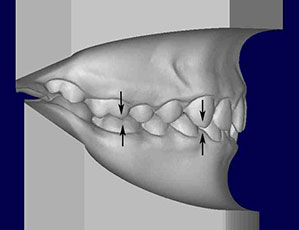
Class II Malocclusion
The upper teeth are too far ahead of the lower teeth (commonly referred to as an “overbite”)
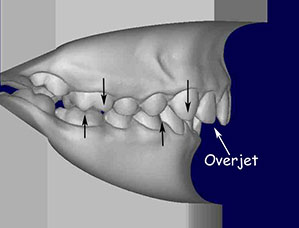
Class III Malocclusion
The lower teeth are forward of the upper teeth (commonly referred to as an “underbite”).
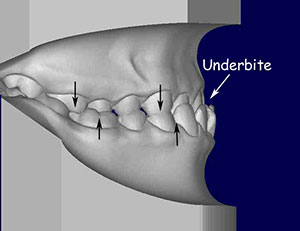
The three main classification systems define how a bite may be off in a front to back direction. Althouth the class I malocclusion may have a good front to back bite position, there may be other features that characterize the malocclusion. For example, a class I malocclusion patient may have significant crowding, spacing, midline asymmetry, crossbites, rotated teeth, or other problems.
Overbite
An overbite, or excessively deep overlap of the front teeth, may also be seen on some patients. While an overbite may not always be an esthetic concern to the patient, there is evidence that an excessively deep overbite increases the incidence of wear on the front teeth.
Overjet
Overjet is the distance between the top and bottom front teeth in a front-back direction. “Buck” teeth would be considered excessive overjet. Although there have been studies that do not show a correlation, most studies have shown an increased risk of trauma to the top front teeth in patients that have an excessively large amount of overjet. This is mainly due to an increased prominence of the teeth, making them more prone to injury.
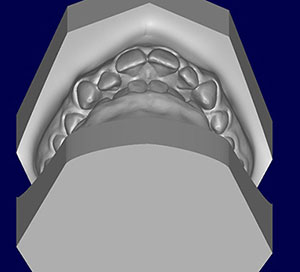
Open Bite
An open-bite refers to a malocclusion where the teeth do not touch when fully biting together. This may occur in the front teeth (anterior open bite) or in the back teeth (posterior open bite).
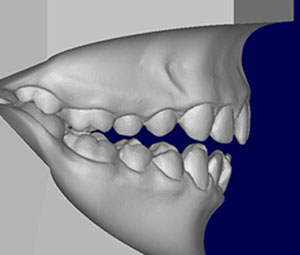
Many times an open bite is more likely to be related to a jaw position problem rather than just a tooth position problem. Jaw position and jaw growth problems can contribute to open bite, underbite, severe overjet, and asymmetrical issues. The x-rays and other records taken in the initial stages of treatment will help the orthodontist better discern the cause and best treatment options.